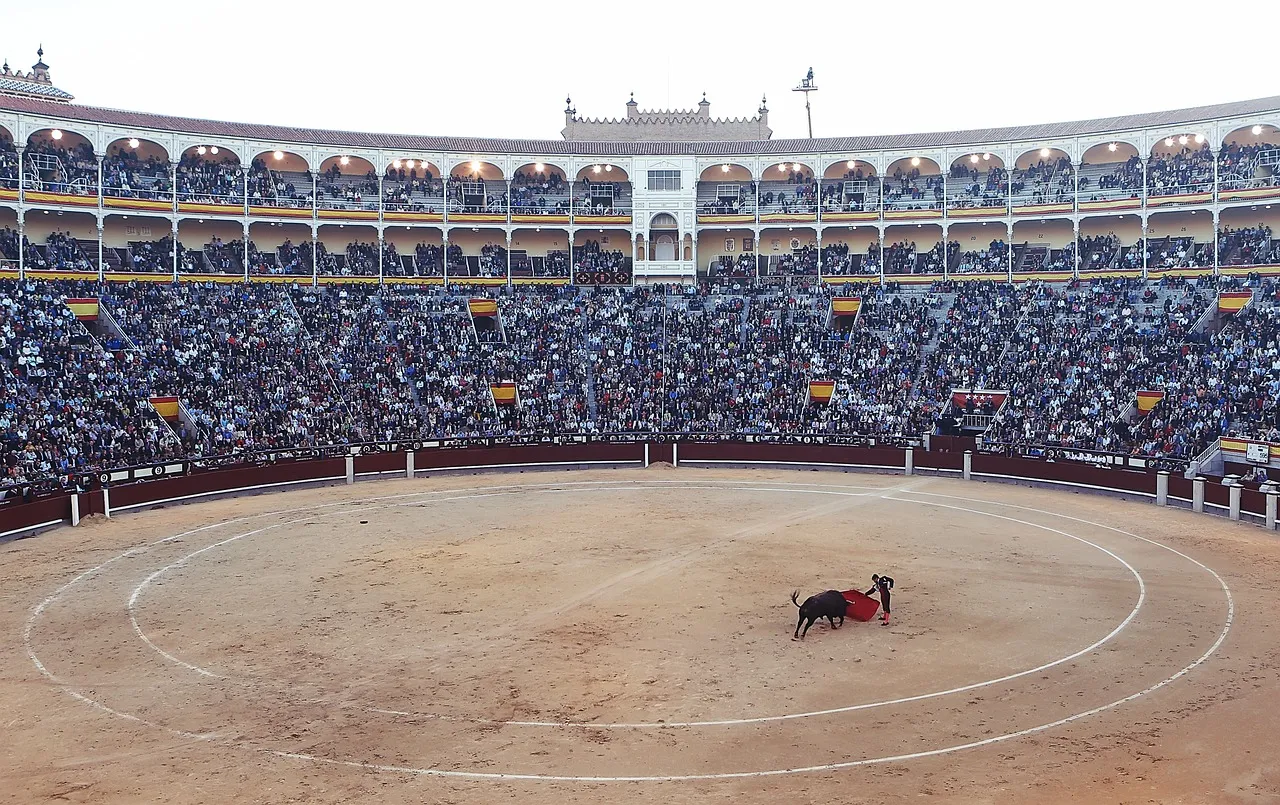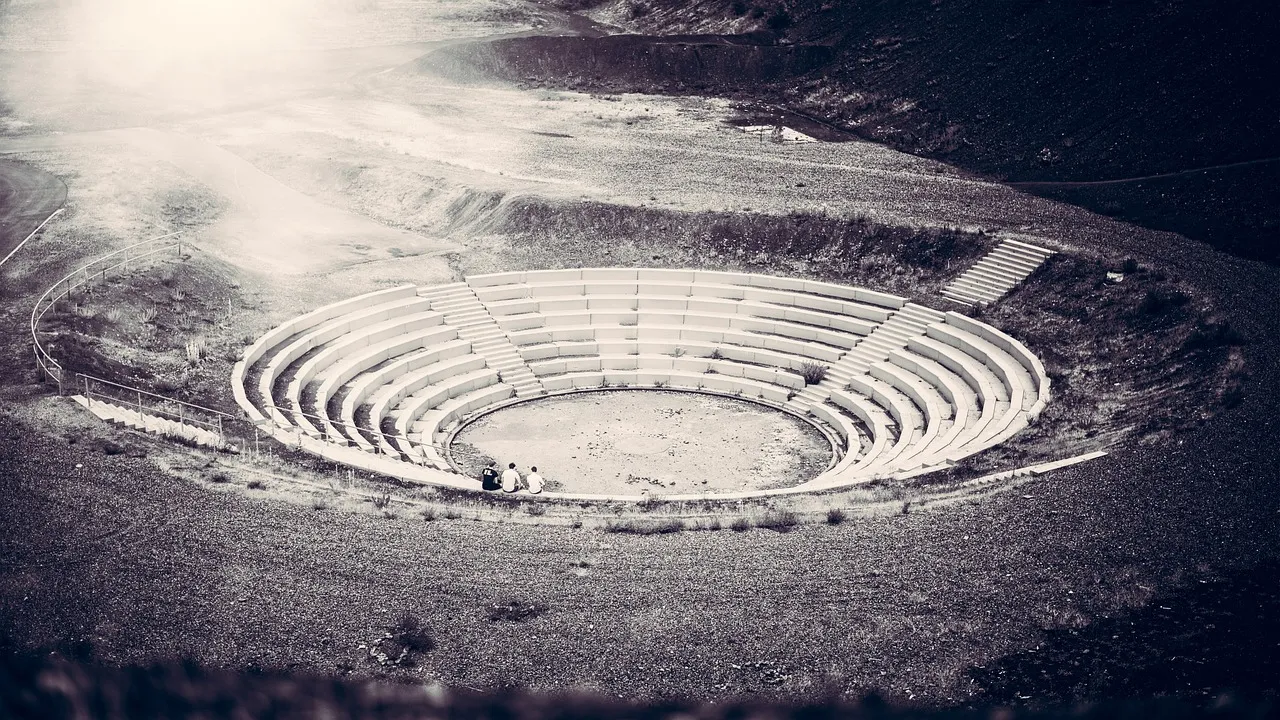Bullfighting
“If you tell any story long enough, they all end the same way.” – E.H.
In the dusty arenas of Spain, where the sun hangs heavy and the heat rises from the earth, the ancient art of bullfighting unfolds. Here, in these sandy circles surrounded by a sea of spectators, men test their courage and skill against animals bred for strength and fury. It is a contest older than the stories whispered through generations, a brutal ballet where life and death swirl together in an unforgiving dance.

Bullfighting is as old as Spain itself, rooted in the dust and blood of a history long told in narrow streets and sun-baked arenas. It began as something different — not the spectacle we know today. In ancient times, men fought bulls not for applause but for survival, testing their courage against beasts whose horns could tear through flesh as easily as a blade through cheese. It was brutal and honest, life reduced to its simplest terms. It was not just a sport, but a way to prove one’s worth — to measure a man by his ability to stand firm against the raw force of nature.
As centuries passed, the contest evolved. By the time of the Moors, it had become a form of pageantry. Nobles on horseback jousted with bulls to prove their bravery, while commoners watched, waiting for their own chance to face the animal on foot. By the 18th century, bullfighting took the shape we know today. Men traded the horse for the cape, and the matador became the star of the arena. The ring turned into a stage, the fight into an art. It was no longer about brute strength but about finesse, courage, and timing. With the rise of great bullfighters, it became something more — an expression of Spain’s soul, a reflection of life and death under the Iberian sun.

Ferdinand VII of Spain formalized it, turning bullfighting into a national institution. The matadors became celebrities, their movements studied, their courage admired. The fight was no longer just about surviving — it was about performance, about grace in the face of death. The great bullfighters of the 20th century, men like Belmonte and Manolete, carried the tradition forward, refining it, making it more about the dance than the kill.
In the ring, there is no safety net, no second chance. The matador stands alone, a lone figure in a costume as brilliant as the sun, a man whose heart beats in rhythm with the approaching danger. His face is calm, his movements slow and deliberate, as if he has all the time in the world, though death charges toward him with every step the bull takes. Ernest Hemingway, one of bullfighting’s most notable aficionados, once said, “Bullfighting is the only art in which the artist is in danger of death.” And it is true. In other pursuits, the artist risks scrutiny; here, the artist risks everything. The matador’s performance is not just for applause — it is a test of his character, his nerve, his ability to stand his ground when the earth beneath his feet quakes with the force of the bull’s charge.

The corrida de toros, as the Spanish call it, is more than a display of violence. It is not merely slaughter, though to the untrained eye, it may seem that way. It is a dance of precision, of grace under pressure, a combination of athleticism and aesthetic beauty. The matador’s cape, crimson as the blood that will soon spill, moves like a poem written in the air — each pass a stanza, each movement a verse. There is beauty in this moment, even as danger shadows every step. The bull, enormous and filled with fury, charges at the cape, and the matador evades with the ease of a man who has done this many times before, though no two fights are ever the same. Each bull is different, each one a new challenge, a new danger.
As the fight progresses, there comes a moment — inevitable and unmistakable — when the air in the arena changes. The crowd grows quiet, trumpets sound, the tension builds, and even the matador seems to move with new purpose. This is the moment of truth. The bull, though fierce, is tiring, and the matador knows it is time to end the story. He takes up the sword, and with the same grace he has shown throughout the fight, he prepares to deliver the final blow. There is nothing rushed in his movements. He knows this is not just a fight but a performance, and the audience watches his every move.

When clean, the moment the sword pierces the bull’s heart is both solemn and tragic. It is the culmination of everything that has come before — the final act in a play that has only one ending. The bull staggers, its mass heaving with the effort of its final moments. The crowd, which had been holding its breath, erupts into cheers, for man has triumphed over nature. But it is not always true. On rare occasions, the bull, through sheer force of will and stamina, earns its freedom. These bulls are spared, sent to live out their days in peace — a testament to their strength and courage. For even in a fight so weighted toward one outcome, there is room for valor to be rewarded, an honor for both protagonist and antagonist.
Bullfighting is a paradox. It is a spectacle that pits man against beast, but it is also a pageant — a show of skill and beauty in the face of violence. To those who watch, it is a thrilling display, a story of life and death told under the hot Spanish sun. But for the matador, it is more than that. It is a test, a ritual, a way of confronting mortality. There is no room for fear in the arena, for fear would be fatal. The matador must face the bull, and by extension, his own death every time he steps into the ring.

Yet, for all its violence, there is an undeniable beauty in bullfighting. It is a celebration of life, even as it preludes death. The bull is not just an opponent, but a force of nature, something that must be respected even as it is fought. And the matador, for all his skill and grace, is not invincible. He knows, as does the crowd, that the bull could win. And it is this knowledge — this ever-present danger — that gives the corrida its edge, that makes it more than just a sport. It is a reminder that life is fleeting, that death is always near, waiting in the wings.
The consequences of a bullfight are part of its controversy. Death, in the modern age, has become taboo. To kill in public — man or beast — has fallen out of favor. Not long ago, and still in some places, public executions or sacrifices were celebrated — a universal reminder of our mortality. Today’s opinion toward the matador is understandable. We are removed from death. Be it our food or our family, death isn’t something we face directly (unless seen on a screen). Fewer people harvest their meals, especially large animals, and the elderly are brought to places that deal with their passing. Finality has become industrialized, much like the rest of our society.

Thus, the modern disdain for bullfighting. To dance with an animal mesmerizes; to see one killed horrifies. Bullfighting has fallen out of favor around the world, even in parts of Spain. Younger generations distance themselves from the gore of the arena and the political controversy surrounding it. Yet on the ranches and haciendas of the Ibero-influenced world, the tradition remains strong. People, young and old, embrace the mortal dance — a metaphor for the life we all live.
Under the Spanish sun, in arenas filled with life and the scent of sweat and blood, the bullfight continues, as it has for centuries. The matadors come and go, their names remembered only by those who saw them stand tall in the face of danger. The bulls, too, are forgotten, their strength and fury lasting only as long as the fight itself. But the dance remains, unchanged by time. It is a tradition, a ritual, a confrontation with the inevitable. And in this dance, there is something that speaks to the core of what it means to be alive — to stand against the forces that would end you, and to fight, if only for a moment, against the darkness that waits for us all.
